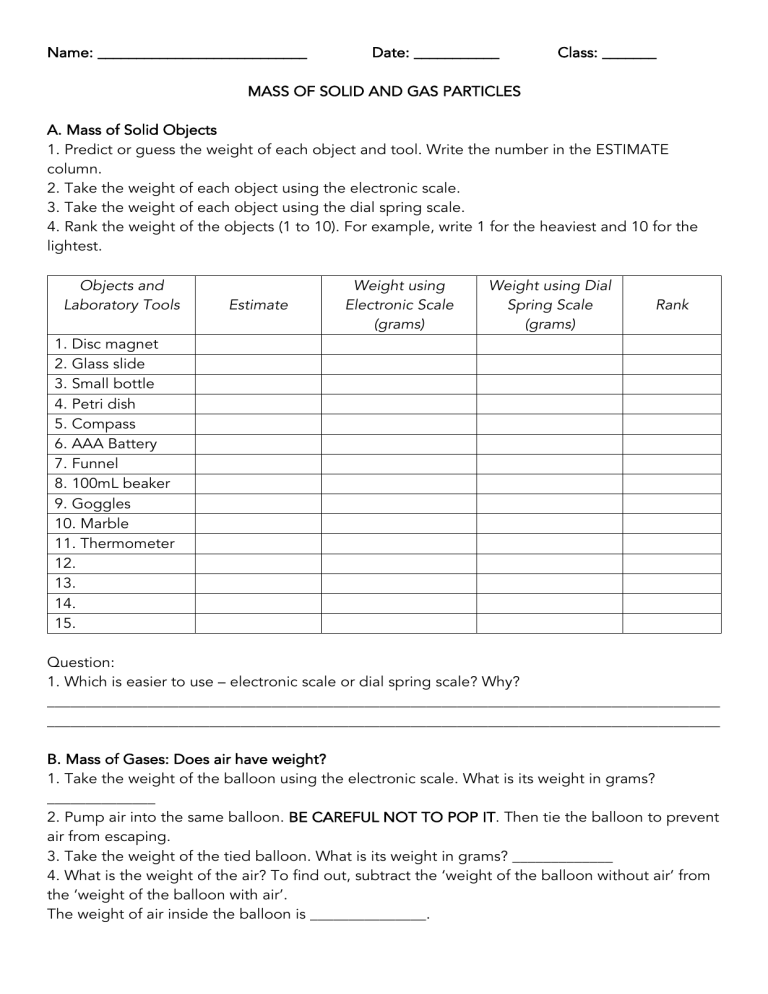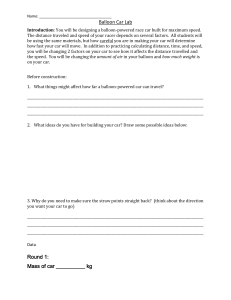
Name: ___________________________ Date: ___________
MASS OF SOLID AND GAS PARTICLES
A. Mass of Solid Objects
Class: _______
1. Predict or guess the weight of each object and tool. Write the number in the ESTIMATE column.
2. Take the weight of each object using the electronic scale.
3. Take the weight of each object using the dial spring scale.
4. Rank the weight of the objects (1 to 10). For example, write 1 for the heaviest and 10 for the lightest.
Objects and
Laboratory Tools
1. Disc magnet
2. Glass slide
3. Small bottle
4. Petri dish
5. Compass
6. AAA Battery
7. Funnel
8. 100mL beaker
9. Goggles
10. Marble
Estimate
Weight using
Electronic Scale
(grams)
Weight using Dial
Spring Scale
(grams)
Rank
11. Thermometer
12.
13.
14.
15.
Question:
1. Which is easier to use – electronic scale or dial spring scale? Why?
_______________________________________________________________________________________
_______________________________________________________________________________________
B. Mass of Gases: Does air have weight?
1. Take the weight of the balloon using the electronic scale. What is its weight in grams?
______________
2. Pump air into the same balloon. BE CAREFUL NOT TO POP IT . Then tie the balloon to prevent air from escaping.
3. Take the weight of the tied balloon. What is its weight in grams? _____________
4. What is the weight of the air? To find out, subtract the ‘weight of the balloon without air’ from the ‘weight of the balloon with air’.
The weight of air inside the balloon is _______________.




